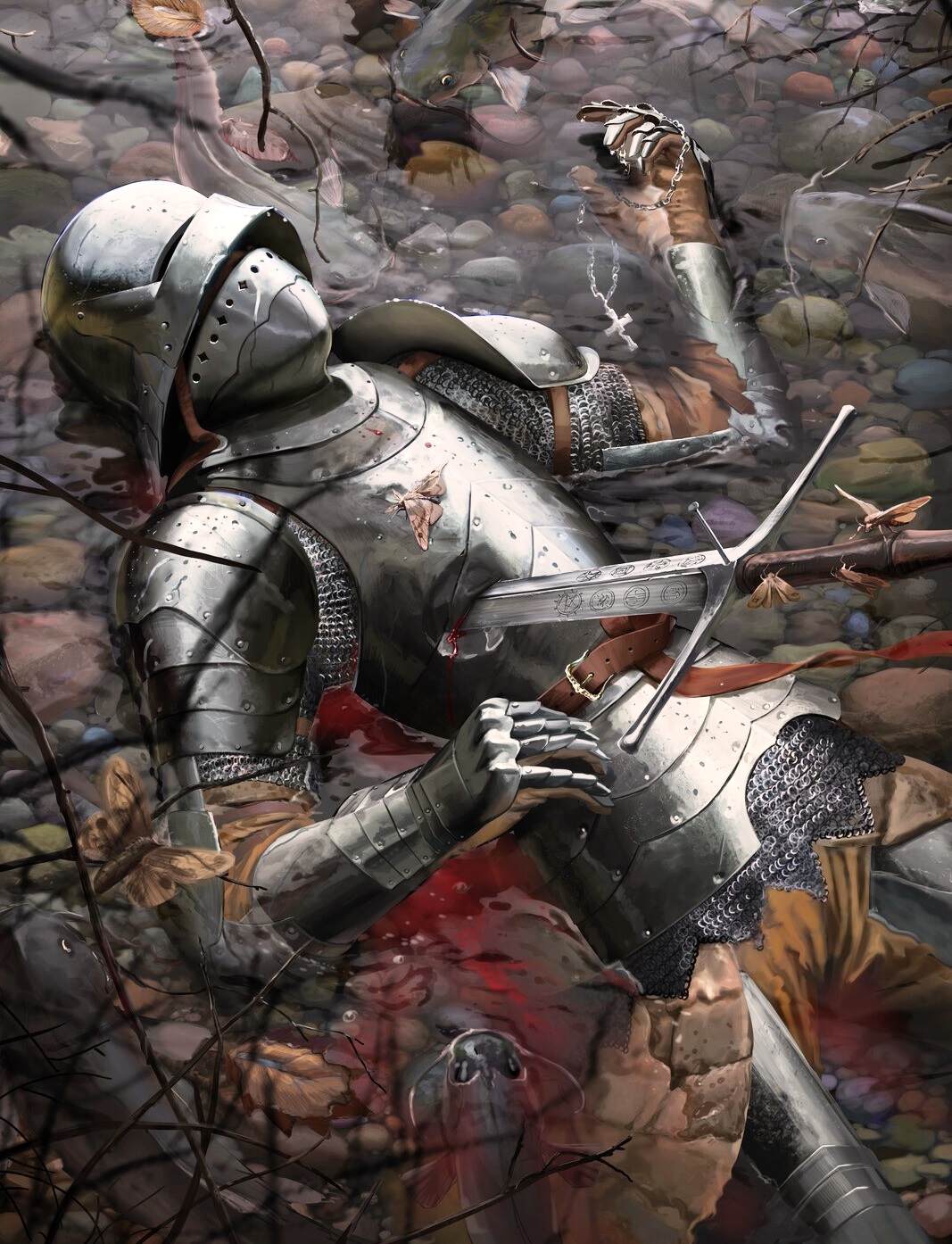Difference between revisions of "Death"
Tao alexis (talk | contribs) |
Tao alexis (talk | contribs) |
||
| Line 1: | Line 1: | ||
[[File:Death b.jpg|right|525px|thumb]] | [[File:Death b.jpg|right|525px|thumb]] | ||
| + | '''Death''' is the game result that occurs when a levelled character's [[Hit Points|hit points]] are reduced through [[Damage (hit points)|damage]] to less than a total of [[Negative Hit Points|minus 9]]. In the case of non-levelled humanoids, death occurs at minus 4 hit points or less. With all other creatures, counting the majority of [[Monster|monsters]] and [[Animal|animals]], death occurs at zero hit points. | ||
| + | |||
| + | |||
Player characters are not immune to the possibility of death, which may result from many factors: [[Combat|combat]], [[Disease|disease]], [[Dehydration|dehydration]], [[Necrotic Damage|necrotic damage]], [[Wounds|wounds]], [[Aging|old age]] or the many possible effects resulting from the natural environment are merely the more predictable possibilities. | Player characters are not immune to the possibility of death, which may result from many factors: [[Combat|combat]], [[Disease|disease]], [[Dehydration|dehydration]], [[Necrotic Damage|necrotic damage]], [[Wounds|wounds]], [[Aging|old age]] or the many possible effects resulting from the natural environment are merely the more predictable possibilities. | ||
Revision as of 19:01, 6 November 2023
Death is the game result that occurs when a levelled character's hit points are reduced through damage to less than a total of minus 9. In the case of non-levelled humanoids, death occurs at minus 4 hit points or less. With all other creatures, counting the majority of monsters and animals, death occurs at zero hit points.
Player characters are not immune to the possibility of death, which may result from many factors: combat, disease, dehydration, necrotic damage, wounds, old age or the many possible effects resulting from the natural environment are merely the more predictable possibilities.
Now and then, characters will die through no fault of their own. They may take every precaution. They may avoid risk. And still an unexpected roll of the die results in the character’s death. Such moments, though very distressing, are an acknowledged part of the game. Indeed, the chance of death is critical to maintaining the game’s tension and momentum. Many times, players will succeed in killing an enemy with a freakish roll, or a freakish combination of chances. Synchronicity demands this may happen TO the players, also.
Unlike the AD&D Dungeon Master’s Guide, I don't agree that the DM has the right to arbitrate this situation. However demoralizing it may be for the party to lose a beloved character — who might die in a manner to make them beyond resurrection, such as being buried by a mountain or incinerated in a lake of lava — a game is a game. Ultimately, death builds character. This enhances the pleasure of survival. The possibility of death produces sweeter victories when the player understands that death WAS REAL and COULD HAVE HAPPENED.
Yet the death of a character is never the end of the game.
When a character dies, the player has the option of beginning again and rolling a new character, or attempting to restore their character from the dead through the use of death’s door, raise dead, resurrection, reincarnation, alter reality or wishing.
See Also,
Animate Dead
Damage
Hit Points
The Adventure
Undead
